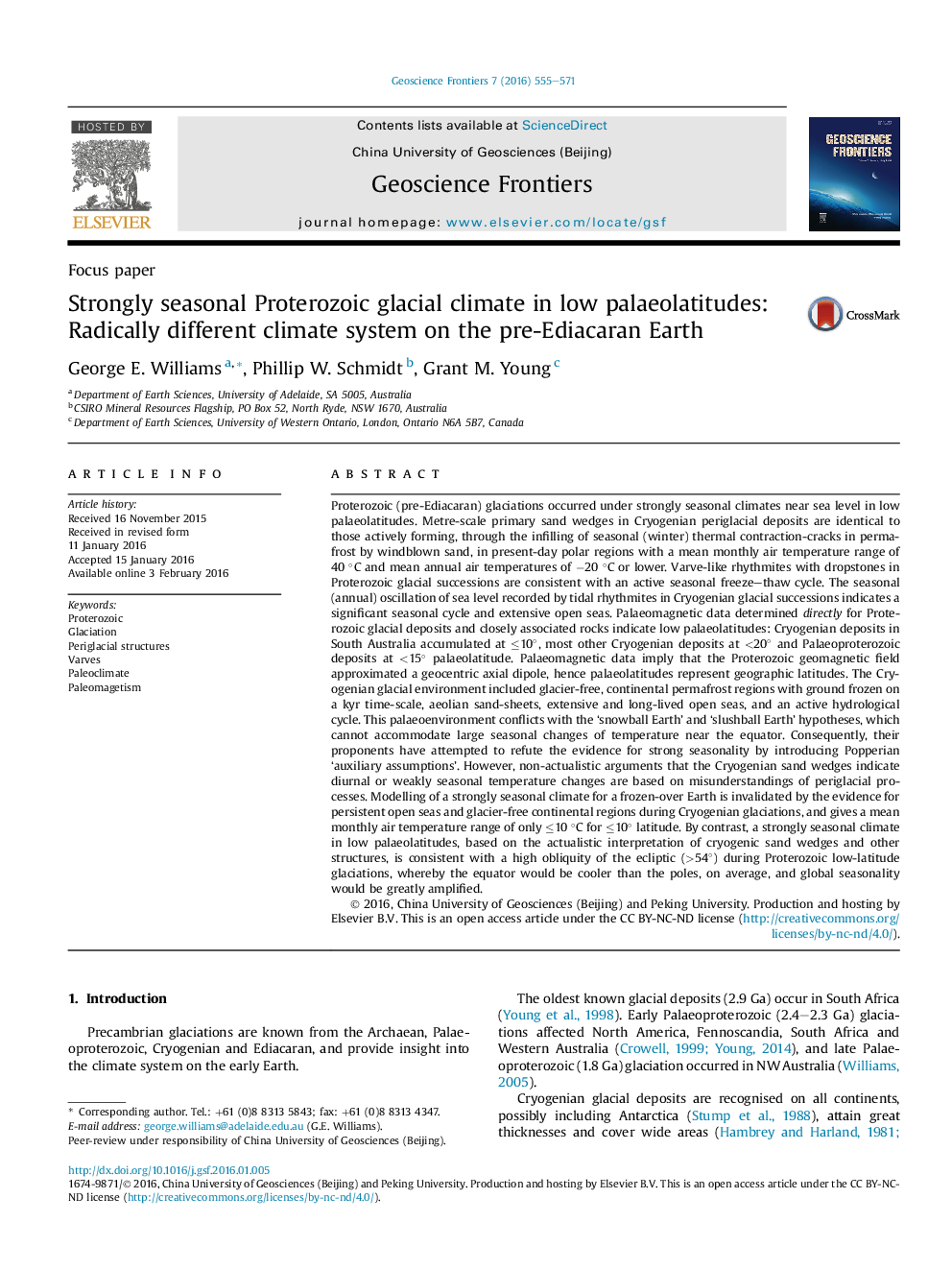| کد مقاله | کد نشریه | سال انتشار | مقاله انگلیسی | نسخه تمام متن |
|---|---|---|---|---|
| 4681458 | 1348851 | 2016 | 17 صفحه PDF | دانلود رایگان |
• Large seasonal changes of temperature marked Proterozoic glacial climates.
• Proterozoic (pre-Ediacaran) glaciation occurred near sea level in low palaeolatitudes.
• The data are better accommodated by a high obliquity than by a snowball Earth.
Proterozoic (pre-Ediacaran) glaciations occurred under strongly seasonal climates near sea level in low palaeolatitudes. Metre-scale primary sand wedges in Cryogenian periglacial deposits are identical to those actively forming, through the infilling of seasonal (winter) thermal contraction-cracks in permafrost by windblown sand, in present-day polar regions with a mean monthly air temperature range of 40 °C and mean annual air temperatures of −20 °C or lower. Varve-like rhythmites with dropstones in Proterozoic glacial successions are consistent with an active seasonal freeze–thaw cycle. The seasonal (annual) oscillation of sea level recorded by tidal rhythmites in Cryogenian glacial successions indicates a significant seasonal cycle and extensive open seas. Palaeomagnetic data determined directly for Proterozoic glacial deposits and closely associated rocks indicate low palaeolatitudes: Cryogenian deposits in South Australia accumulated at ≤10°, most other Cryogenian deposits at <20° and Palaeoproterozoic deposits at <15° palaeolatitude. Palaeomagnetic data imply that the Proterozoic geomagnetic field approximated a geocentric axial dipole, hence palaeolatitudes represent geographic latitudes. The Cryogenian glacial environment included glacier-free, continental permafrost regions with ground frozen on a kyr time-scale, aeolian sand-sheets, extensive and long-lived open seas, and an active hydrological cycle. This palaeoenvironment conflicts with the ‘snowball Earth’ and ‘slushball Earth’ hypotheses, which cannot accommodate large seasonal changes of temperature near the equator. Consequently, their proponents have attempted to refute the evidence for strong seasonality by introducing Popperian ‘auxiliary assumptions’. However, non-actualistic arguments that the Cryogenian sand wedges indicate diurnal or weakly seasonal temperature changes are based on misunderstandings of periglacial processes. Modelling of a strongly seasonal climate for a frozen-over Earth is invalidated by the evidence for persistent open seas and glacier-free continental regions during Cryogenian glaciations, and gives a mean monthly air temperature range of only ≤10 °C for ≤10° latitude. By contrast, a strongly seasonal climate in low palaeolatitudes, based on the actualistic interpretation of cryogenic sand wedges and other structures, is consistent with a high obliquity of the ecliptic (>54°) during Proterozoic low-latitude glaciations, whereby the equator would be cooler than the poles, on average, and global seasonality would be greatly amplified.
Figure optionsDownload as PowerPoint slide
Journal: Geoscience Frontiers - Volume 7, Issue 4, July 2016, Pages 555–571
